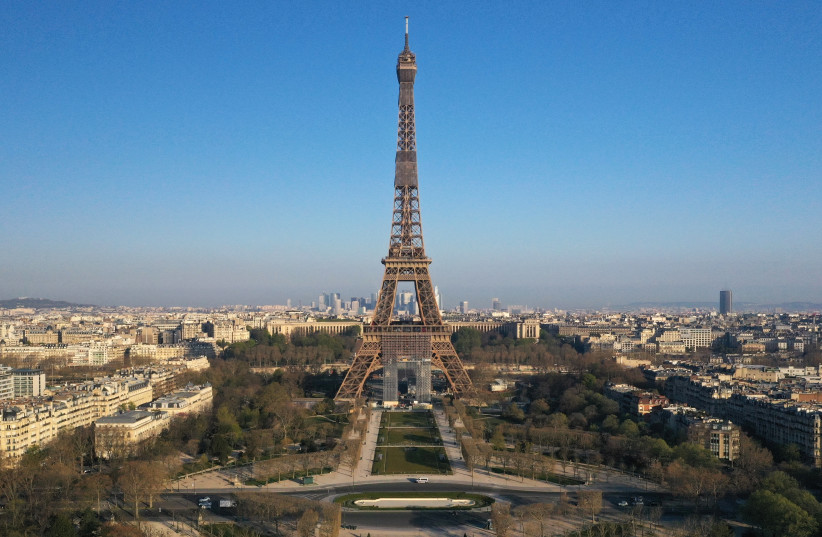Several asteroids comparable in size to the Washington Monument and Great Pyramid of Giza are heading towards Earth within the next few weeks, according to NASA's asteroid tracker.
Each of these asteroids has a maximum estimated diameter of around 160 meters or more. This is notable, as an asteroid must have a diameter of at least 140 meters to be considered a Potentially Hazardous Asteroid (PHA).
The first asteroid coming towards Earth, dubbed 2021 SM3, ranges in size between 72 meters and 160 meters, and is set to fly past the Earth on October 15. For comparison, the Washington Monument is 169.29 meters tall, and the Great Pyramid of Giza stands at 130 meters.

It is unlikely to actually hit the Earth and is only set to pass at a distance of around 4.8 million kilometers. This is much farther than the Moon's distance from the Earth, but it is still classified by NASA as a near-Earth object (NEO). For comparison, the Moon maintains a distance of 384,400 kilometers away from Earth.
But 2021 SM3 will be followed up just five days later by an even larger asteroid heading for Earth. Dubbed 1996 VB3, this asteroid's size ranges between 100 meters to a whopping 230 meters, taller than the height of San Francisco's iconic Golden Gate Bridge, and is set to fly past the Earth on October 20. This asteroid is set to pass even closer to the planet, around 3.2 million kilometers away, though it is still not predicted to impact the planet.
And just five days after that comes another massive asteroid.
This one, known as 2017 SJ20, has a diameter ranging from 90 meters to 200 meters, the maximum being over twice the size of the 92.99 meter-high Statue of Liberty, and will fly by on October 25 at a distance of over 7.1 million kilometers.
But while that's it for October, further large asteroids are set to approach in November.
The first of these comes on November 2. Dubbed 2017 TS3, this asteroid ranges in size from 98 meters to 220 meters, and will pass the Earth at an estimated distance of around 5.3 million kilometers.
An even larger one is set to come on November 13, flying past the Earth at a distance of around 4.2 million kilometers.
This massive asteroid is known as 2004 UE and is estimated to be between 170 meters and 380 meters long. For comparison, that's nearly the size of the Empire State Building in New York City.
Just one week later, on November 20, another asteroid, dubbed 2016 JG12, is set to pass the Earth at a distance of around 5.5 million kilometers. This asteroid is not as huge as the previous one, but is considerably large, with a diameter estimated to be at a maximum of 190 meters, larger than the 184 meter-high Seattle Space Needle.
A day later, on November 21, another massive asteroid will pass the planet. Known as 1982 HR, or 3361 Orpheus, this asteroid is estimated to be 300 meters long – for comparison, the Eiffel Tower is 324 meters high – and will pass within an estimated 5.7 million kilometers from Earth.
And rounding out the month of November is 1994 WR12, an asteroid ranging between 92 meters and 210 meters in size, which is set to fly past the planet on November 29 at a distance of around 6.1 million kilometers.
Almost all of these asteroids are Apollo-class, which means their orbits around the Sun can cross the orbital path of our own planet, but their orbits are also wider than Earth's.
The one non-Apollo asteroid mentioned above is 1994 WR12, which is classified as an Aten-class asteroid, meaning it crosses the Earth's orbit around the Sun but spends most of its orbit inside the Earth's orbit.
Asteroids frequently fly by the Earth, with some being comparable in size to these aforementioned asteroids, but others being far smaller. However, even small asteroids could do considerable damage to the planet.
For comparison, the last known significant asteroid impact was on February 15, 2013, when an asteroid exploded in the air above Chelyabinsk, Russia. This asteroid was just 17 meters wide, and while it didn't result in any casualties, the shock wave from the explosion shattered windows in six different Russian cities and caused 1,500 people to need medical attention.
Luckily, NASA has estimated that the Earth is at no risk of being impacted by an asteroid within the next 100 years, though this notably only applies to asteroids coming from the "front," meaning towards Earth and the Sun. Asteroids coming from the "back," towards Earth away from the Sun, are still notoriously difficult to detect. On September 16, asteroid 2021 SG, ranging between 42 meters and 94 meters in size, flew past the Earth, and scientists never even knew it existed, let alone flying past the planet, until the next day.
An asteroid impact remains one of the most dangerous possible natural disasters that could occur, however unlikely. It is for this reason that astronomers around the world, including at NASA's Planetary Defense Coordination Office (PDCO), work to monitor all nearby asteroids and calculate their trajectory to see if any of them pose a threat to the planet.
This is done through the use of special "asteroid hunter" telescopes, but some projects, like the Double Asteroid Redirection Test (DART) Mission set to be launched next month by the PDCO and John Hopkins University, seek to find ways of defending against asteroids themselves.



